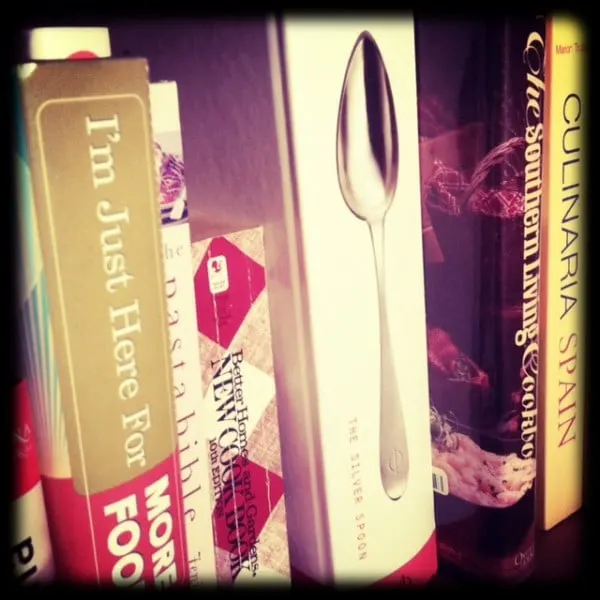A little while ago, somewhere around 3 in the morning (I was trying to sleep, I swear), I came up with the idea to do some posts every now and again called “Back to Basics”. These posts will cover a variety of topics, but all of them will deal with cooking or baking situations that, although they seem like they might be intuitive, can actually be quite confusing, especially for the beginning cook.
I’m hoping this is one of my better 3-in-the-morning ideas.
So, let’s start at the very beginning…a very good place to start…(name that movie!): Reading recipes!
It may seem like one of the most basic parts of cooking, but reading a recipe can be tricky business, especially when not everyone writes recipes in the same way. Some people write recipes with the beginning cook in mind and include plenty of details, while others assume their readers have a certain knowledge base and forgo some of the explanations. So how can you know if you are reading a recipe correctly?
In this post, we are going to explore the ingredient list. Even though this may seem like a pretty straight-forward thing (Here’s what you need! Get to it!), this is perhaps where the biggest level of variation occurs in how people write recipes. So let’s talk about some of these differences and how we can use a few basic assumptions when preparing our ingredients for a recipe.
– Know your units of measurement and their abbreviations: Some recipe writers – such as myself – always write out their units of measurement (tablespoons, cups, ounces, etc.). Others always use abbreviations. Here’s a list of some common (English unit) abbreviations and what they mean:
- c or C= cup
- t or tsp = teaspoon
- T or tbl or tbsp = tablespoon
- oz = ounce (fl. oz = fluid ounce)
- lb = pound
- pt = pint
- qt = quart
- pkg = package
– Know default ingredients: Sometimes recipes always specify what type of ingredients you should use. For example, some recipe writers always specify “granulated sugar” instead of simply listing “sugar”. Other times, you have to make a few assumptions about what ingredients are intended. Here are a few general assumptions* that you can make if a recipe does not state otherwise:
- Sugar = granulated sugar
- Eggs = large eggs
- Flour = all-purpose flour
- Vanilla = pure vanilla extract
- Butter = salted butter
- Cinnamon = ground cinnamon (As a rule of thumb, I generally assume any spice that comes in whole and ground form is usually intended to be ground unless the writer states otherwise [“1 tsp whole cloves”])
- Yeast = To be honest, a good recipe will specify a type of yeast, but if none is mentioned, I usually assume active dry yeast (as opposed to rapid rise or fresh yeast).
- Oil = In baking recipes, this typically refers to a light-flavored oil, such as vegetable oil. If you are cooking or sautéing, it typically refers to an oil such as olive oil, that will impart a small amount of flavor and can withstand a decent amount of heat.
*Ok, we all know what can happen when you make assumptions, so I will not claim that these are always the case. In my experience, however, they are pretty darn reliable. So take that for what it’s worth.
– Know when to measure: Ingredient lists can be tricky. For example, one recipe might say, “1 cup halved cherry tomatoes”, while another recipe says, “1 cup cherry tomatoes, halved”. What’s the difference? Is there one?
The quick answer is yes, there is a difference. The long answer is that the difference is when to measure.
In the first instance (“1 cup halved cherry tomatoes”), the writer wants you to measure out 1 cup of halved cherry tomatoes – cut them, then measure them. In the second (“1 cup cherry tomatoes, halved”), he or she wants you to measure out 1 cup of whole cherry tomatoes, and then cut them in half. In other words: any instructions that come after the listed ingredient should occur after measuring. Any instructions that are listed with the ingredient should be a part of the measuring process. Make sense?
____________________________
Do you have a “Back to Basics” topic that you’d like to see me cover? Maybe you’d like to know how to properly cook rice, or what sorts of things you should always have on hand in your pantry. Leave me a comment or shoot me an email and I will see what I can do!


Great! Great idea!!! So useful! If you wanna partner up on something or bounce ideas off anybody, let me know!
Thanks girl, will do!
Love this! So helpful! Sharing on my fb page!
I’m so glad you thought it was helpful!! Thanks for sharing =)
Love this idea!
What a great idea,..Mary Poppins 😉
You’re close…right actress, wrong movie 😉
Is it really Sound of Music? Gosh it’s been too long since I’ve watched either of those.
Great idea! I talk about this stuff with my kids all the time and it’s such a great way to learn basic measuring skills, reading, fluid vs. dry measure. I think people often forget that adults might need some help in this area too! When you read you begin with A,B,C. When you sing you begin with do, re, me, Fraulein Maria!
For a future topic, my husband could use one on poach vs. simmer vs. boil! lol
Ding ding ding! You got the movie! You win a gold star on your theoretical chart. =)
I actually am planning on part 2 of this post to be about deciphering instructions and what some of the terms mean! I already had simmer and boil, but I can certainly add poach to the list! Then you can just make your hubby refer to it like a dictionary 😉
Saw the directions for making a piecrust. Can’t find the recipe, would like to try it. I have always used lard.